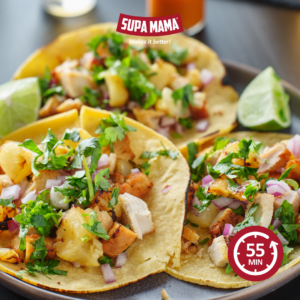
Guide to Food Packaging Using Reusable Snack & Sandwich Bags
Food packaging greatly assists any home in not only keeping food fresher for longer, but in keeping your food securely sorted too. It also eliminates the chances of the growth of bacteria occurring while ensuring that the nutrients of your food do not change. Today we help you understand ways you can make better use of reusable snack and sandwich bags for food storage.
Food packaging items such as snack and sandwich bags are among the best items that you can use for storage. They have managed to make food storage a lot easier, but there has always been the guilt of discarding these bags immediately after use. Being environmentally conscious also means reducing the amount of waste you use, which can be difficult when you have to use food packaging. However, using reusable snack and sandwich bags allows you the convenience of easy food storage without the guilt of increasing plastic waste. Reusable snack and sandwich bags are recyclable, and can be used more than once – which is excellent if you are also trying to reduce your costs.
When storing food in food packaging, you must take safety into account. Food hygiene is essential when using reusable snack and sandwich bags as there is always the risk of bacteria growth if they are not cleaned properly. The following tips will ensure that you make use of the best food storage practices.
1. Clean the bags properly
Cleaning reusable food packaging is essential because it ensures that food storage is hygienic. When you clean these bags, you need to be careful not to turn them inside out, as this could potentially compromise the sealing of the bag’s edges. To effectively clean the bag, ensure that you rinse the inside with hot water. Pour enough water to fill a quarter of the bag, close the bag and then swish it with the water.
You may also add cleaning solutions to clean the bag, especially if you find any spots or stains. You can use cleaning solutions by making a paste containing equal parts lemon juice, baking soda distilled white vinegar. You can then apply the paste to the bag for almost an hour, and then rinse it out using warm water. To avoid water spots, use a dry towel to dry the bag.
2. Be careful when dealing with high-risk food
Some issues could arise when using reusable food packaging bags. Food-poisoning bacteria could grow when using particular types of food. These foods include:
- Dairy products like cheesecake and custard tarts.
- Raw and cooked meat such as turkey and chicken.
- Processed meats like ham and salami.
- Ready to eat food that includes pizzas and sandwiches with any of the high-risk foods mentioned.
If you use a reusable food packaging bag for the high-risk food items mentioned above, there could be some risks involved. Failing to clean them properly could mean that there is lurking bacteria, which could give you food poisoning.
To be considerate of people who have any food allergies like shellfish and peanuts, you should be more careful when storing food in reusable bags could have disastrous consequences.
3. Seal and close
When it comes to food packaging, you should ensure that you seal and close the bags properly. One way that food packaging bags ensure that food remains fresher for longer is because of the seal that is created around food. It also reduces the chances of cross-contamination occurring, especially when storing high-risk food in the same place as food that is not.
Check that all food is securely closed and that you do not mix certain foods. For example, storing marinated meat next to a sandwich could be dangerous as the sandwich could pick up the bacteria, leading to food poisoning.
4. Include dates and time
Things stored in food packaging bags that you will use later should have labels of the packaging date. Labelling the dates of your packaged items helps you avoid food poisoning as particular food such as dairy products and cooked sliced meats you use in sandwiches, for example, could go off even if they look and smell okay.
5. Store food properly in the fridge
When storing food, certain foods need to be appropriately stored to prevent bacteria from growing. Examples of this food include cooked meats and any ready-to-eat food. The fridge temperature should be between 0 degrees Celsius to 5 degrees Celsius, which is cold enough to prevent the growth of bacteria. Ensure that you do not open the fridge door regularly, and when it is full, ensure that you also reduce the fridge’s temperature so that it is always cold enough. If you make food that you know you will not consume immediately, like a sandwich, then place it in your fridge until you want to eat it to avoid bacterial growth.



